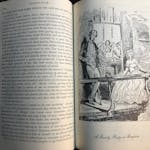In the predawn hours of Oct. 2, my wife stirred me awake with the breaking news that President Donald Trump and the first lady had tested positive for COVID-19. I immediately reached across cat-studded blankets for my phone: Leading epidemiologists were already tweeting out astute analysis and treatment options.
One such Twitter influencer is Nicholas A. Christakis, a lauded Yale scientist whose capacious, gripping "Apollo's Arrow: The Profound and Enduring Impact of Coronavirus on the Way We Live" is the first major COVID-19 book out of the gate, buoying the reader from Wuhan to Washington, from New York to New Zealand.
Christakis grounds his account not only in the events of recent months but also in a larger history. As he rightly reminds us, pathogens have flitted between humans since the dawn of communal living: "There was the plague of Athens in 430 BCE. The plague of Justinian in 541. The Black Death in 1347. The Spanish flu of 1918."
"Apollo's Arrow" weaves in graphs and tables, all set against crisp, concise storytelling. The book derives its title from the Iliad but wears its erudition lightly, framing our plague with sociological insights and sparkling anecdotes.
"In March 2020, as the lockdowns were coming into force in Europe, seismologist Thomas Lecocq of the Royal Observatory of Belgium noticed that the Earth was suddenly still," Christakis writes. "Every day, as we humans operate our factories, drive our cars, even simply walk on our sidewalks, we rattle the planet. Incredibly, these rattles can be detected as if they were infinitesimal earthquakes … the coronavirus had changed the way the Earth moved."
From hard-hit locales such as Brooklyn and the Sun Belt, Christakis illuminates our evolving knowledge of SARS-CoV-2, a virus initially thought to attack the lungs but now recognized as a multi-organ predator.
He paints an indelible portrait of a world transformed, from goats and elephants skulking along city streets to the lifting of pollution, as in Jalandhar, India, where citizens could view, for the first time, Himalayan peaks over 100 miles away.
What does Christakis see as he peers into his crystal COVID ball? He hypothesizes three phases of our plague, which he labels "immediate" (until 2022), "intermediate" (2022-2024), and "post-pandemic" (from 2024 onward). Masks and social distancing are here for the long haul, even with an effective vaccine. The loss of life and jobs will be traumatic.
But "Apollo's Arrow" dares to imagine a silver lining. Once public spittoons (and spitting) were as common as traffic lights until the Spanish flu vanished them like a magician's trick. Christakis recalls a time when cigarettes on flights were customary if unsafe; "now we do not go into restaurants and wonder why there are no spittoons, and the No Smoking signs on airplanes feel like an abstract formality. We have forgotten how the world used to be."
We have a steep slope to climb before we conquer this disease, but as "Apollo's Arrow" reveals, the science, ever shifting, will guide us forward.
Hamilton Cain is the author of "This Boy's Faith: Notes From a Southern Baptist Upbringing" and a member of the National Book Critics Circle. He lives in Brooklyn.
Apollo's Arrow
By: Nicholas A. Christakis.
Publisher: Little Brown/Spark, 384 pages, $29.





